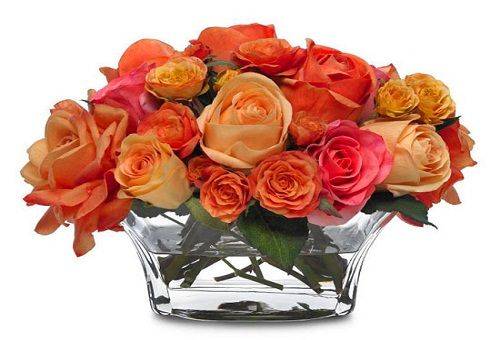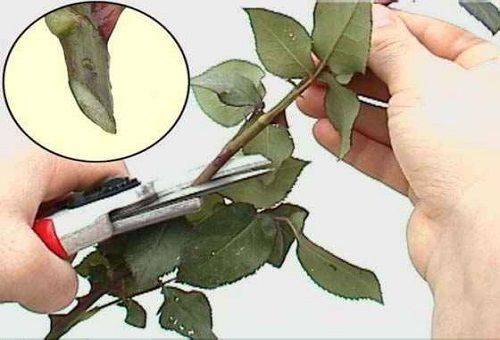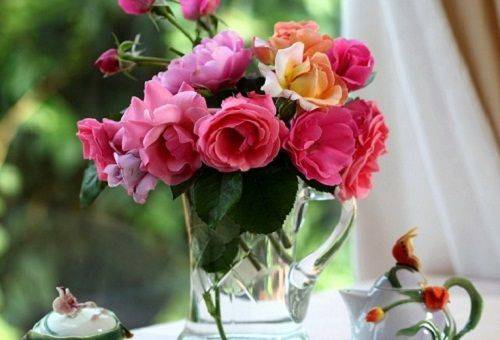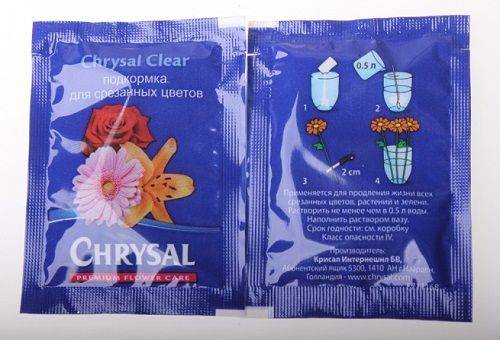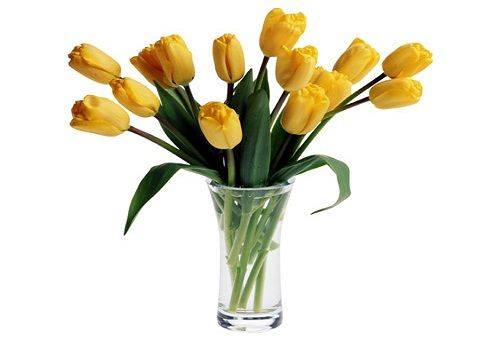What and how can you keep cut flowers in a vase for longer?
Fresh flowers can transform even the most boring and dull decor, but the life of cut plants is very short-lived. Fortunately, florists know how to preserve a bouquet for a long time and are happy to share their secrets with others. If you carry out all the manipulations correctly, you can admire a beautiful flower arrangement in an elegant vase for several weeks. This will take a lot of effort, but the result is definitely worth it.
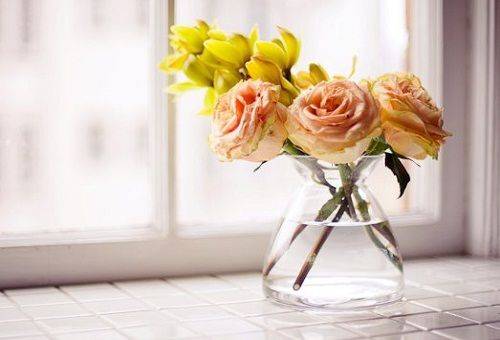
And it all starts with the purchase of a bouquet, because today only a few are engaged in growing flowers. When choosing a suitable plant ensemble, you need to pay attention to the following points:
- Petals and leaves should have a bright and rich color. Dark spots and dried edges indicate the beginning of the wilting process and no measures will allow you to preserve the bouquet for longer than a few days.
- Short stems with a slimy, darkened cut are signs of old flowers.
- Newly cut plants are characterized by sufficient moisture and elasticity. If you bend a piece of leaf or petal, it should quickly return to its place without leaving any traces of bending.
- Sellers often try to hide signs of wilting by removing individual parts of the flower. If a certain specimen looks naked, most likely it has undergone such a correction.
A bouquet will last in a vase for a long time only if it is composed of fragrant flowers that literally exude moisture, with tight buds and leaves tightly seated in the beds.
Proper preparation of the bouquet and disinfection of water
Cut flowers will last many times longer if you carry out the following manipulations before placing them in a vase:
- We lower the stems into water and make an oblique cut on each one. After this, you can no longer remove the plant from the liquid. This procedure prevents the process of clogging of blood vessels with air bubbles, causing dehydration of the flower.
- Immediately before placing the bouquet in the vase, you need to remove all the leaves, tendrils and spines that will be located in the water. Then the proliferation of bacteria will slow down, and the absorption of nutrients by unnecessary elements will be reduced.
- Very dense and thick stems must not only be cut, but also split 5 cm deep by inserting matches into the cracks. Then the flowers will not experience moisture deficiency and will last longer.
Tip: The same technique can be applied to delicate plants with soft stems. In this case, the cut surface only needs to be scratched with a sharp needle, this will significantly increase the absorption capacity of the element.
- Particular attention should be paid to specimens with hollow stems. You need to carefully pour water into them and plug the holes with cotton wool or gauze. If there is a significant release of milky juice, you can dip the tips of the trunks in boiling water or lightly burn them.
- Flowers such as lilies and tulips will last much longer in a vase if their anthers are removed immediately. This applies to all plants with long stamens.
Cut plants prefer soft water, it is best if it is rain, melt, well or spring.If there is nothing other than tap liquid, you need to first let it sit for 24 hours and drain it to get rid of the sediment.
You can deal with bacteria that rapidly multiply in water with flowers by carrying out simple disinfection:
- You can put a silver coin or some charcoal at the bottom.
- A pinch of washing powder or a crushed aspirin tablet (one piece per 5 liters of liquid) gives a good effect.
- For high-quality disinfection in a vase of water, it is enough to dissolve a pinch of potassium permanganate, a teaspoon of table salt, 100 mg of boric acid or a tablespoon of vinegar.
All of the above manipulations will help the flowers last as long as possible, but we must not forget about proper care of the bouquet. You can’t just set it and forget it; maintaining the attractiveness of flowers requires a number of auxiliary daily operations.
Suitable feeding options for fresh cut flowers
Cut plants will not last longer than one week if they are not provided with adequate and regular feeding. For this purpose, it is customary to use one of the following products at home:
- Sugar. It is administered in a ratio of 1.5 teaspoons per liter of water. This is a universal remedy, but most often it is used to care for tulips, carnations and daffodils.
- Alcohol. Recommended for maintaining the freshness of asters. You should add no more than a teaspoon of product for every liter of water.
- Aspirin. Just one tablet is enough to maintain the attractiveness of an impressive bouquet of roses or chrysanthemums.
- Vinegar. A weak solution of table vinegar will preserve cut dahlias for a long time.
- Industrial fertilizers.They can be universal or specialized, in the form of powder or drops. When using the chosen product, you must act strictly according to the instructions. If you exceed the recommended dosage, the plants will not last longer, but there is a risk of burns on the flowers.
The water in the vase needs to be changed every day, and the fertilizing needs to be updated. It is not advisable to change it; for delicate representatives of the flora this can become serious stress.
Where is the best place to put a bouquet and how to care for it?
The correct arrangement of the bouquet has no less influence on the condition of the flowers than caring for the plants. In the case of cut elements, the following rules apply:
- Lighting should be as natural and high-quality as possible, but direct sunlight is unacceptable. With increased solar activity, it is better to shade the buds and leaves or even move them deeper into the room.
- Fresh flowers don't like heat. It is better to place the bouquet in a cool room. At the same time, we must not forget that drafts are destructive for living plants.
- Particular attention should be paid to composing the composition. There are flowers that are absolutely incompatible and do not fit together in one bouquet. For example, roses, orchids, lilies of the valley, lilies and daffodils are considered selfish and should be placed separately. But geranium and thuja, on the contrary, love complex ensembles and maintain the freshness of their neighbors.
- It is highly not recommended to place flowers in close proximity to fruits. Food products emit ethylene, a gas that promotes the ripening and wilting of plants. Such an ensemble will look attractive, but will not last very long.
Here are a few more simple recommendations that will help preserve the freshness and attractiveness of a bouquet of cut flowers for a long time:
- When changing the water daily, you need to remember not only about introducing fertilizing, but also about disinfecting the liquid.
- Withered or dried leaves and petals should be removed immediately.
- Cuts of stems also need to be regularly updated by just a few millimeters. If you do not do this daily, the access of moisture and nutrients to the plant elements will be disrupted.
- Large leaves will have to be sprayed with lukewarm water from a spray bottle. Some types of flowers can be placed in a bath of cool water overnight. The liquid should not get on the buds.
- It is best to keep the temperature in the room where the flowers are located slightly below comfortable, within 15-18ºС. As a last resort, the room should be well ventilated several times a day. The bouquet must be taken to another room.
The importance of the physical and chemical conditions of keeping fresh flowers is undeniable, but you should not dismiss the atmosphere in the room. Plants experience stress no less acutely than people. Therefore, you should not expect that the bouquet will last long if there is some tension between the inhabitants of the house.
